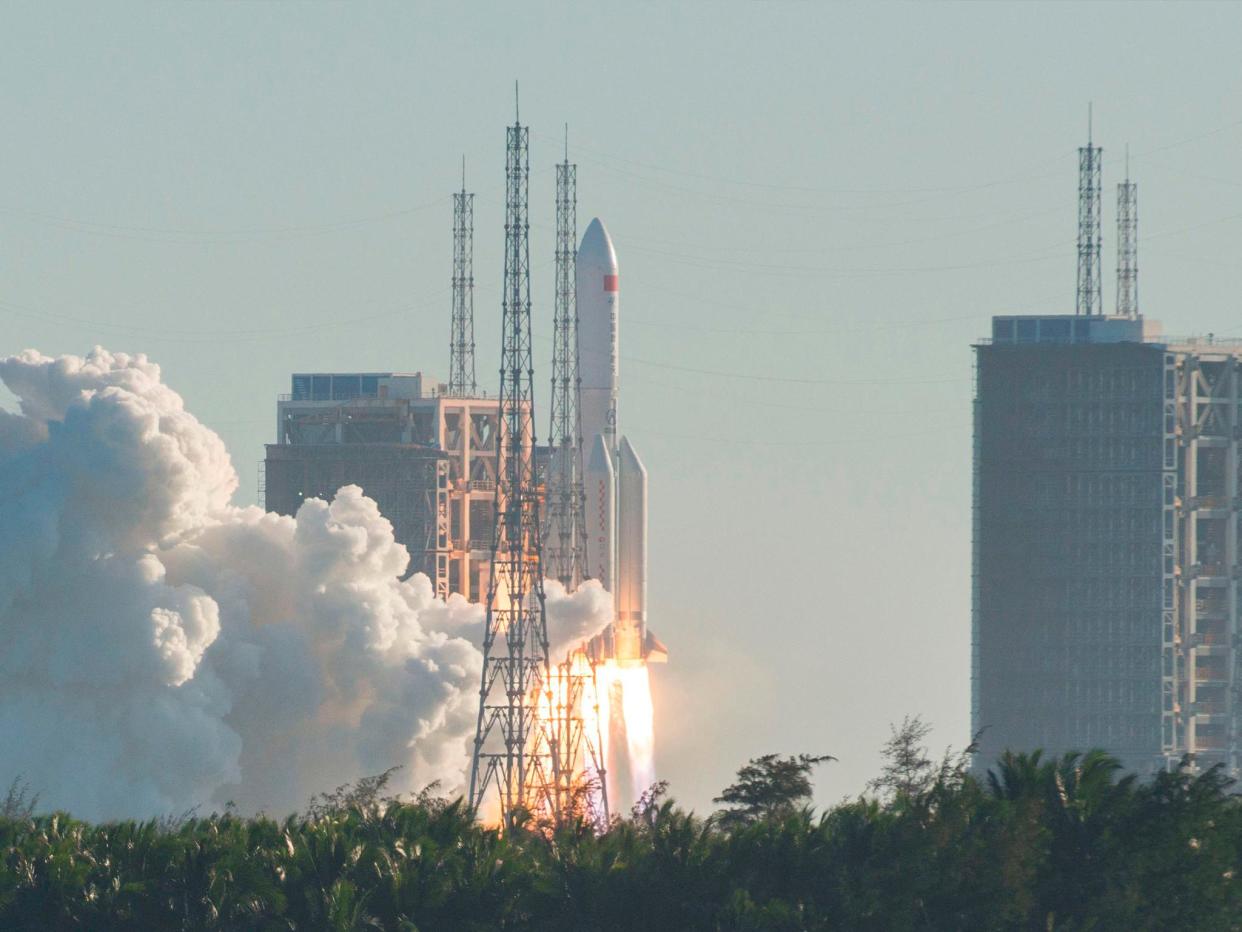Space debris from failed rocket misses New York City by minutes

A Chinese rocket has crashed down to Earth, missing New York by minutes.
The Long March-5B rocket, an unmanned prototype craft launched into space on 5 May, fell down and came around 13 minutes of hitting the city.
CNN reported that the rocket launched from the Wenchang Space Launch Center in the Hainan province in South China.
The rocket experienced a mysterious malfunction on its first flight, but nevertheless returned to China as planned.
The spacecraft, which had been in development for 10 years with the intention to carry large payloads into low-Earth orbit, was over 50 meters long and weighed 849 tons when it took off.
Usually when a rocket launches, the first stage provides the majority of the thrust to get the craft into orbital velocity before dropping into the ocean. A second stage then activates, pushing the rocket’s payload into orbit.
However, the rocket had difficulty breaking out of the Earth's atmosphere.
Jonathan McDowell, an astronomer at the Harvard-Smithsonian Center for Astrophysics, told The Independent that: “Even in space there's a thin bit of atmosphere left. Objects in low orbit travel at 18000 mph, so even a tiny bit of air makes a huge headwind. This causes 'orbital decay' - the satellite's orbit gets lower and lower over time, into the denser atmosphere where the headwind is even bigger.
"Eventually it gets to the point where the heating from friction melts the metal and causes the object to break up and lose enough speed to crash towards Earth. For smaller satellites, they melt entirely and nothing reaches the ground.”
McDowell tweeted that it was the “most massive object to make an uncontrolled re-entry since the 39-tonne Salyut-7 in 1991”.
Tracking objects travelling at such high speed is challenging, and during the descent of the rocket it was predicted that the potential re-entry areas were near Australia, the US, and Africa.
And a new prediction: between 1443 and 1555 UTC. Finally we can narrow down potential reentry areas in Australia, US, Africa pic.twitter.com/0dxRX02QfP
— Jonathan McDowell (@planet4589)
The difference between the craft crashing into its final destination and the city of New York – which has a population of just under nine million people – was only 13 minutes.
About 13
— Jonathan McDowell (@planet4589)
The craft was eventually confirmed by the US Space Force’s 18th Space Control Squadron to have landed in the Atlantic Ocean.
Possible debris has been seen around the Cote d’Ivoire, with reports of a 12-meter long object crashing into the village of Mahounou – directly underneath the rocket’s re-entry track, but 2100km from its re-entry location.
According to other local reports, debris also fell in N'guinou, where a 50kg piece of the spacecraft pierced the roof of a family home. There have been no reported casualties.
Reports of a 12-m-long object crashing into the village of Mahounou in Cote d'Ivoire. It's directly on the CZ-5B reentry track, 2100 km downrange from the Space-Track reentry location. Possible that part of the stage could have sliced through the atmo that far (photo: Aminata24) pic.twitter.com/yMuyMFLfsv
— Jonathan McDowell (@planet4589)
"For the Chinese to let this rocket come down due to natural orbital decay is seen as irresponsible by most people in the space industry", said McDowell.
This is not the first instance where a Chinese rocket launch has gone wrong; according to the Xinhua News Agency – a state-run press agency in China – the Long March 3B rocket which was launched on 9 March had a malfunction in its third stage.
Debris fell over China, and people in Guam posted videos of wreckage shooting through the sky. Guam’s government released a statement that said it had “identified that the object was likely connected to a scheduled satellite test launch from China.”
#UPDATE: #Guam Homeland and federal authorities monitoring reports of “unidentified object” seen falling from the sky @PostGuam pic.twitter.com/3u69abhNu4
— Nick Delgado (@Mr_NixNetwork)
Read more
READ MORE Tom Cruise planning to shoot film in space with Elon Musk and NASA

